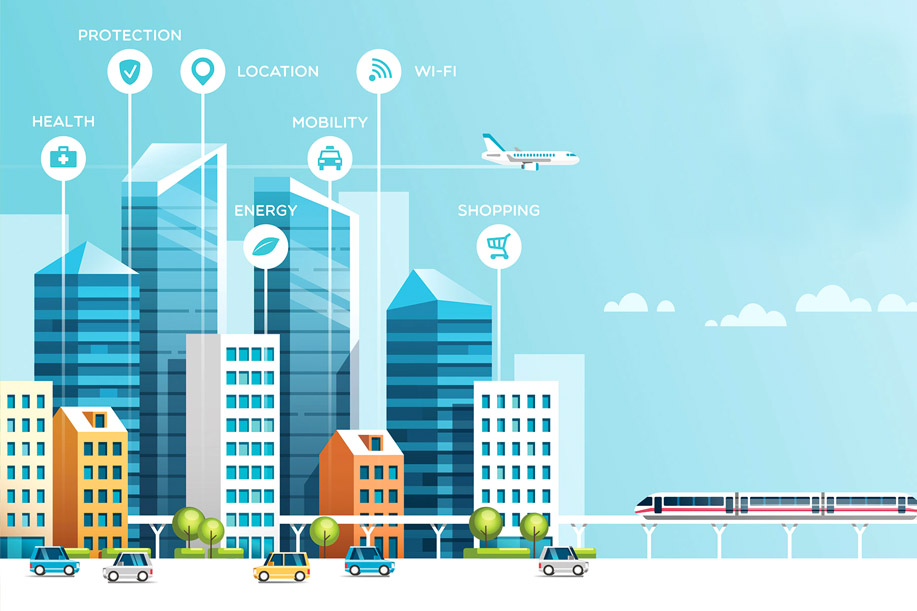As the new energy crisis approaches, the urban context is evolving in terms of digital synergy: here the role of prosumers, a word that refers to those who are both producers and consumers of renewable energy, is becoming more and more important.
Italian energy management is increasingly linked to smart systems
In the context of energy in which resource production is no longer tied to a single, large producer, digital technologies play a crucial role in the management and distribution of energy: the use of smart grid models, which require the use of two-way energy, must, therefore, be managed with great care and efficiency through a new digitization.
This is also necessary for the facilitation and diffusion of new services related to the urban mobility sector, both in the car-sharing and public transport sectors. Therefore, the aim would be to implement digital energy to create a network of smart cities designed to make life easier for citizens.
Innovation linked to the responsible use of energy does not stop at the public domain alone but is also linked to private households, where living comfort and energy efficiency are increasingly managed by digital systems specifically designed to perfectly integrate into smart living spaces and, in the case of offices, smart working.
How does Digital Energy work in Italy?
The use of Digital Energy in Italy is being implemented in the fields related both to private and public sectors where it has more chances to achieve good results.
We are talking about Smart Living, a system that is dedicated to the development of solutions regarding the intelligent use of energy in both public and private contexts through technologies specifically designed to make your own spaces more liveable.
Smart living solutions involve the use of tools such as motion detectors and radiation sensors to achieve the highest level of comfort and energy efficiency in a building.
Another key element is represented by HVAC automation. They monitor the electrical and thermal consumption of a building to avoid wasting energy. In this case, we talk about intelligent thermostats and thermal sensors, which, in new homes, are often implemented through energy incentives.
As already mentioned before, the trend towards self-production and accumulation of prosumers – people who decide to create the energy they consume – sees, in smart living, the use of solutions such as photovoltaic systems, energy storage systems and cogenerators.
In Italy, public authorities are increasingly considering smart lighting, i.e. intelligent lighting of public places such as squares, streets, and avenues.
Solutions related to this lighting concept have led to opting for digital systems for energy management and electricity consumption monitoring. Besides, in the public sector, it is increasingly common to address smart needs such as the installation of charging stations for electric cars or public Wi-Fi networks.
Also in the public domain, waste management processes based on smart environment concepts are becoming more common, with waste recycling implemented through more efficient recycling bins and reward systems for plastic collection.
Smart cities in Italy: how urban centres are innovating mobility strategies
When it comes to smart cities in Italy, the first sector that is implemented is the mobility sector, which is being reconceived in order to optimize the road network as much as possible and to reduce pollution levels linked to the presence of too many vehicles or the use of older and more polluting vehicles. Most common solutions related to smart mobility are often related to the implementation of private and public electric vehicles.
In the first case, results are hard to obtain because the cost of electric cars is very high and recharging them is not easy; in the second case, on the other hand, several Italian centres are obtaining good results through the spread of electric vehicles such as buses, trams and single-seat road cars for public sector employees.
Another innovation related to smart mobility is the use of digital services such as applications related to car-sharing, with the possibility of using an efficient network where several drivers are available to anyone who needs a ride.
Although there are several solutions related to smart living and smart mobility, projects related to the implementation of digital energy and the development of smart cities are not always properly followed. Very often citizens prove themselves incapable of “doing their part”, by using the machine unnecessarily or by not sorting waste: however, the concept of a smart city is also focusing on a greater awareness at the individual level of each inhabitant in Italian cities, to make them responsible for a greener future.
Solutions and components, sustainability and efficiency for an eco-sustainable future
All this requires not only the use of calculated and efficient strategies but also the implementation of energy transport elements that respect high standards of safety and sustainability.
In all energy sectors, a smart use of resources is already possible by using cables that meet high standards both in terms of energy efficiency and the disposal of components that do not contain materials that are harmful to man and the environment.
To use public and private energy in a smart way, it is necessary to consider new elements that can allow every city and every environment to digitize energy optimizing consumption.
In other words, the future of smart cities is only guaranteed if efficient but sustainable cables and electronic components are implemented.

